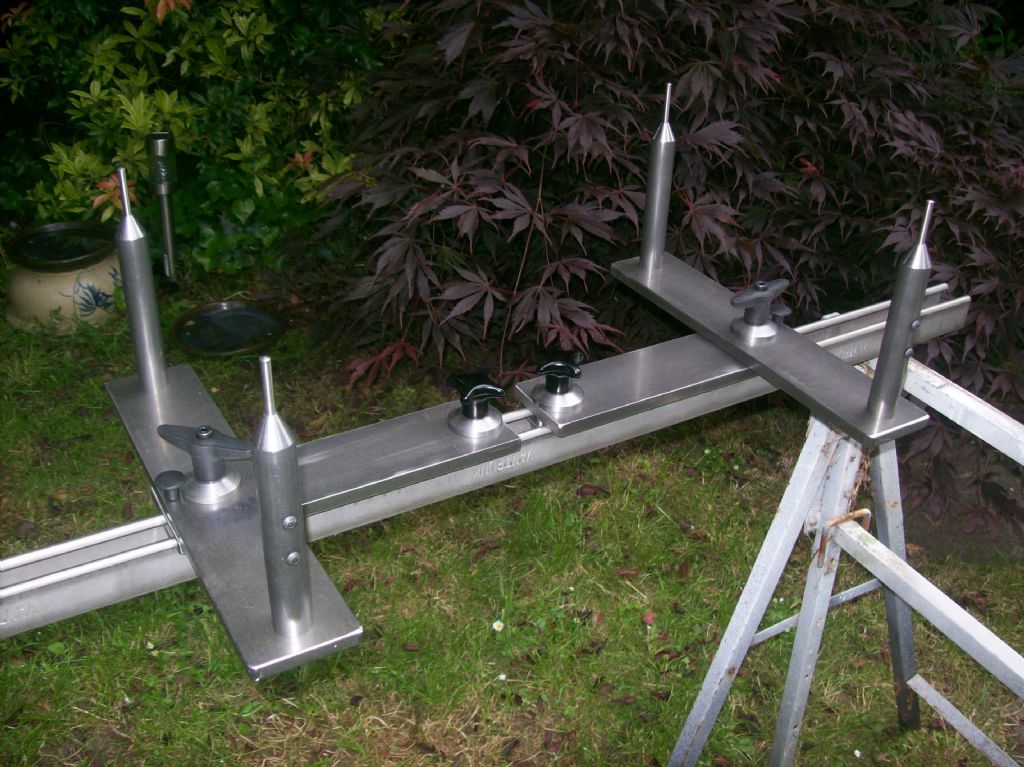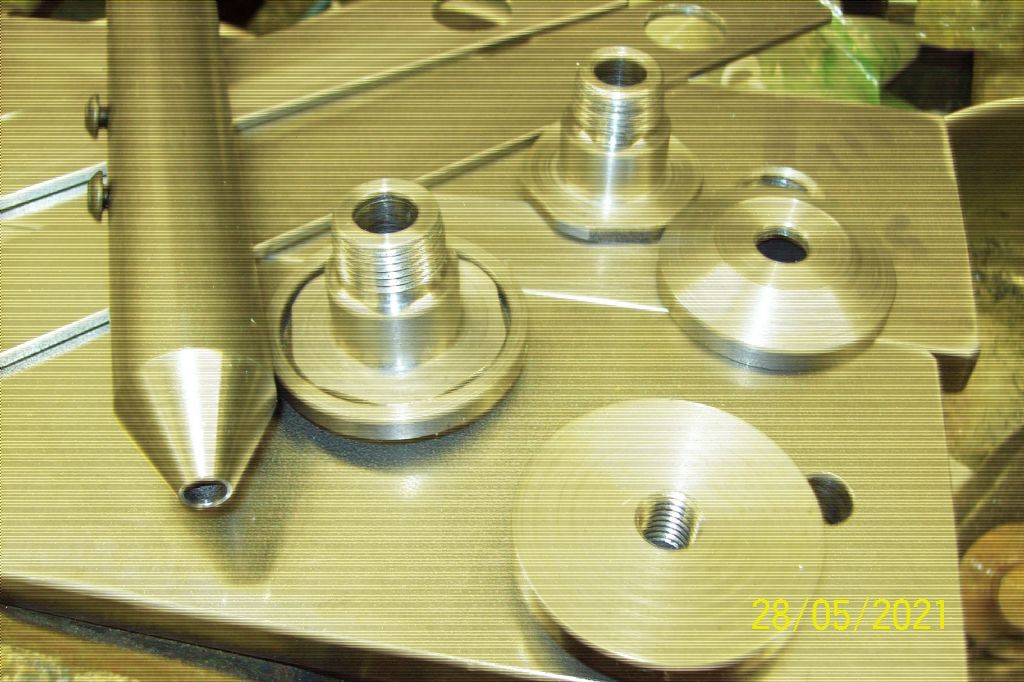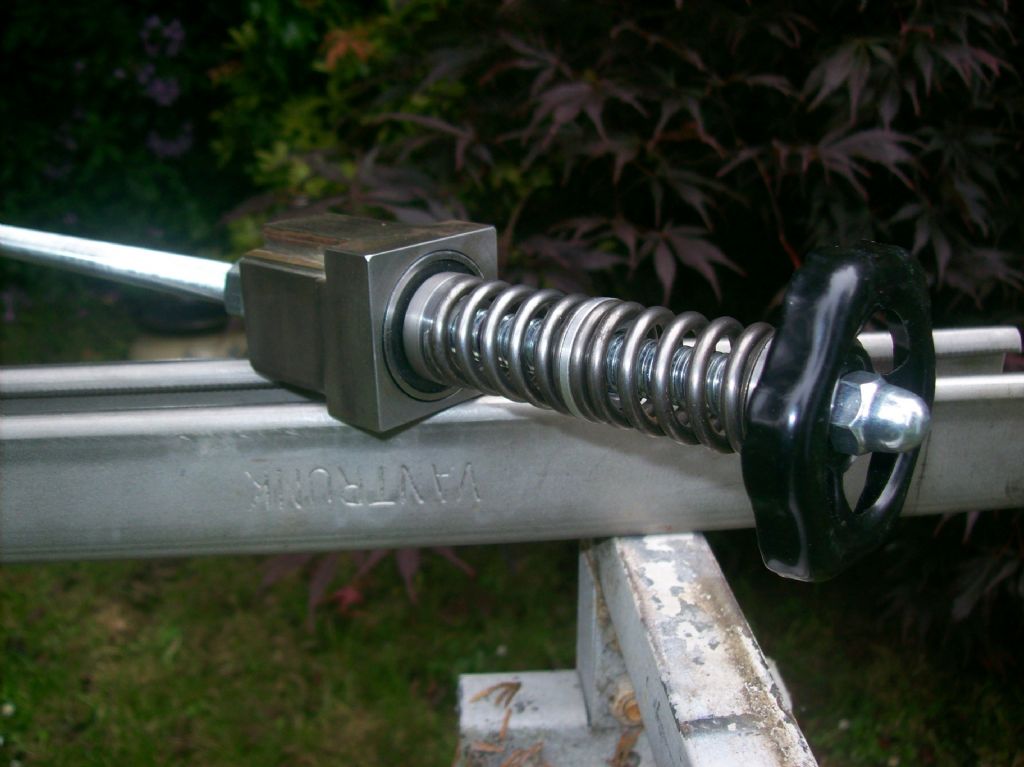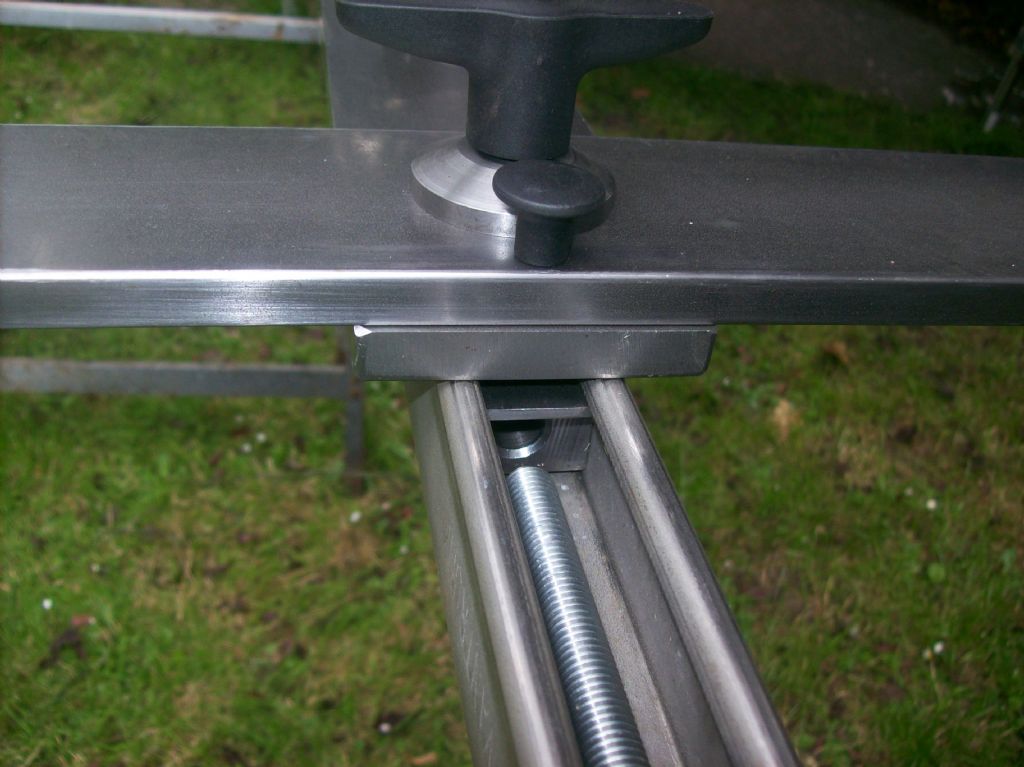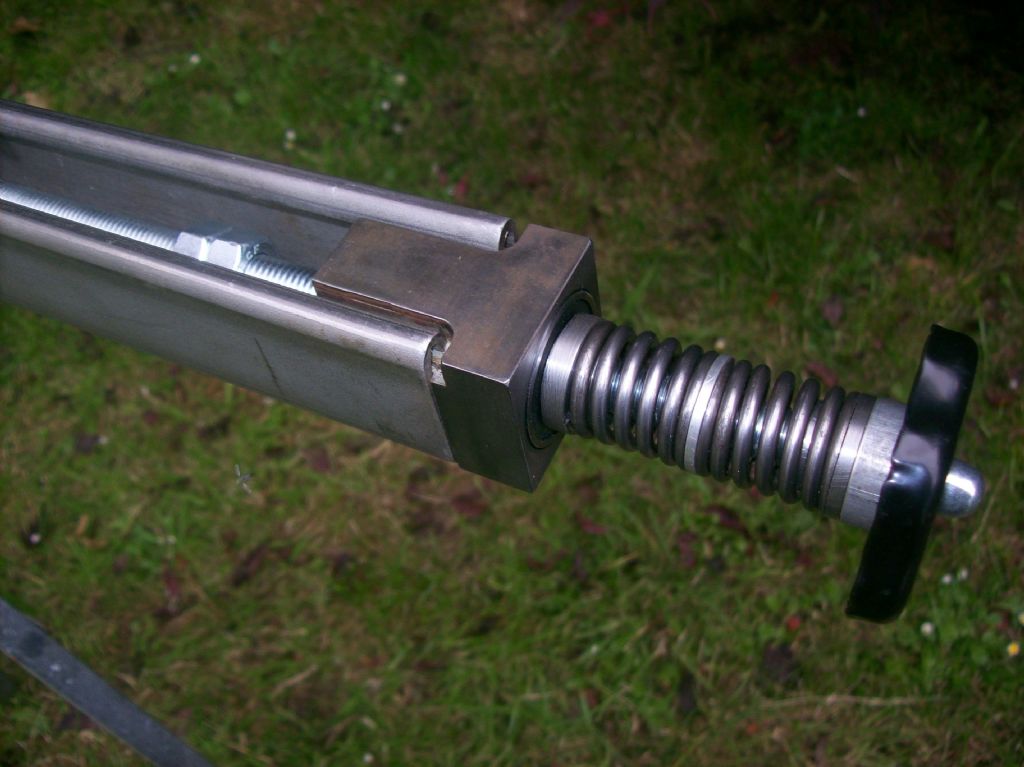A client asked if I would make this jig, similar to other homemade or proprietary units, so that he cn make his own bowstrings and maybe supply others too.
The jig comprises two main elements, each a tee-shaped assembly of steel plates, the cross-piece capable of being swivelled 90 degrees. The two elements are mounted, and slide, on a spine of Unistrut channel as used in factory ceilings for suspending services like lights or sprinklers.
Each cross-piece carries two sturdy posts topped by dowel pins, around which string strands are wound. Plates are 75mm x 12mm section and the posts 25mm diameter, so this really is a sturdy assembly.
.Here the elements are close together for the photograph, but in practice will be some distance apart, determined by desired overall string length.

Each element has two clamping knobs, one through the pivot point, (a more refined arrangement than some varieties) and another at the tail end. The swivelling cross-piece is provided with a locking dowel at each 90 degree position.

Clamps operate on discs relieved centrally to ensure clamping occurs at the periphery for maximum effect.

A further rquirement is the ability to stretch strings to a predetermined tension, and this is achieved through a plug-in module which fits into the end of the Unistrut, and incorporates an M12 leadscrew running through engine valve-springs, and an angular contact ballrace to act as both a journal and thrust race, housed in the plug-in block body.

The module is plugged in, and the main element is slid along to allow the leadscrew to enter a threaded block below the pivot clamp.

With string attached between the far element (locked in place) and the near element (free to slide), turning the leadscrew tensions the string whilst compressing the springs. Calibration shows that 22mm compression gives 150lbs tension, a target figure shown in this position.

In practice I expect the Unistrut will be firmly fixed to a builders' board, worktop or similar.
You now know as much about making bowstrings as I do, i.e. not a lot, but YouTube videos are available which explain all. It's more involved than you might think.
Old School.


